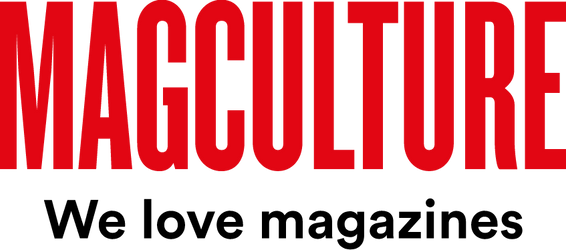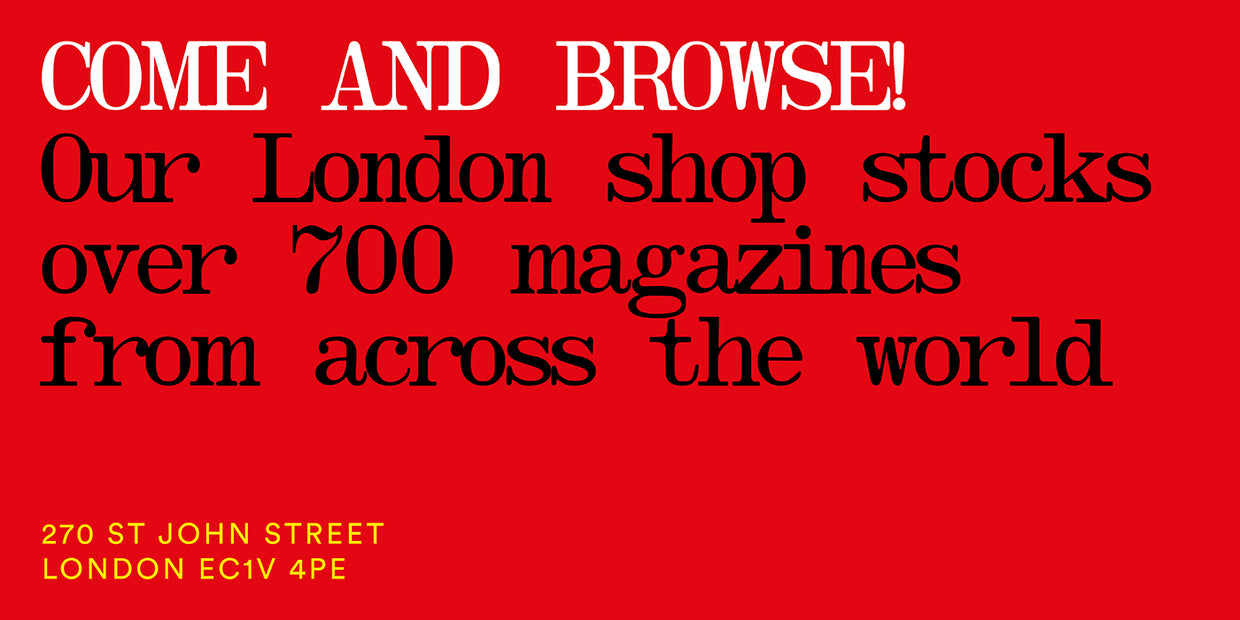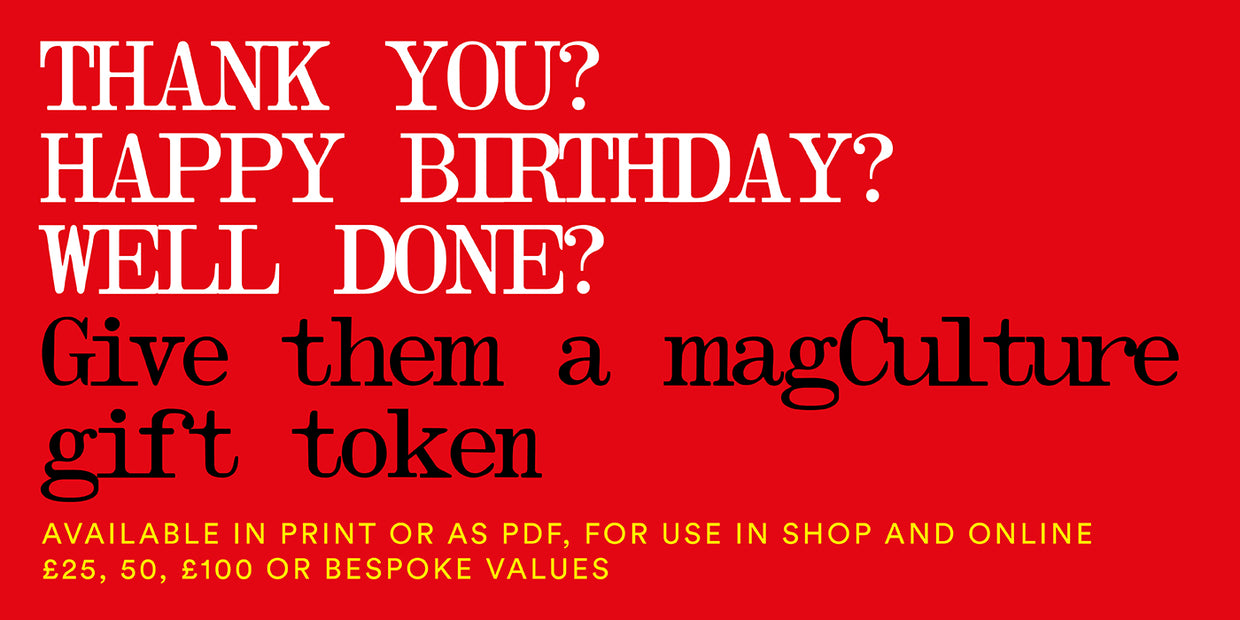
Lars Harmsen, Slanted
Lars Harmsen is the founder and editor of Slanted magazine, which he started in 2014 with Julia Kahl. We hear from him as issue 43 of the design magazine, about graphics in Ukraine, is published.
Lars is a busy man; I first met him at the Colophon conference in Luxembourg back in 2009, when Slanted was just building a name as a European design blog. Today, alongside the website and magazine, he is creative director and partner of Munich-based agency Melville Brand Design and teaches typography at Dortmund University.
He talks through the start of Slanted, and explains how the publication has developed over the past ten years to become a vital reference point for contemporary graphics, helping to spread attention beyond the traditional heartlands of the discipline.
What are you doing this Monday morning?
This Monday, I will be traveling to Bosnia-Herzegovina at the invitation of Banja Luka College. I've never been there before. Dortmund University of Applied Sciences and Arts is sending me there for internationalization purposes.
I travel almost every Monday. Usually in the evening, after a long day at the office, I get on the train and head to Dortmund to teach. Either I leave from Karlsruhe, where Slanted Publishers is based, the journey takes 3.5 hours—or from Munich. That’s where I work for Melville. Then it’s a miserable six hours ride, if all goes well. But the German punctuality when it comes to trains is going to hell right now. There has been no investment for years. Fortunately, I always invest some time in early morning exercise, followed by muesli. Typically German, I suppose…

Describe your work environment.
I’m in Karlsruhe. Today´s morning sun is beating directly into my home-office. I have the blinds down. I leave a gap for the cat. The cat is a he who lies down on the warm wood of the terrace. Until it gets too hot for him too.


Which magazine do you first remember?
I have no idea, maybe it was Bravo, a youth magazine. Completely overloaded, a puked out design. That’s what the girls in my class read. Us boys thought it was crap. The only thing we did was to occasionally look at the pornographic photo stories. Otherwise it was about bands I didn't like—Bay City Rollers, Modern Talking, etc. I was into Pink Floyd. They weren’t featured there. At some point came Max and then Tempo and Wiener. But that was much, much later.
Which magazine matters to you the most this morning?
I don't read through magazines in the morning. Instead, I browse The Guardian online first, then Spiegel, NZZ or Le Monde.

Describe Slanted in three words
Design, culture, passion

You’ve produced over 40 editions of the magazine, and it has changed a lot over that time. Talk us through the changes.
Yes, it all started with typography. Slanted began as a blog. In 2004, we wanted to discuss typography with friends. Blogs were rare back then. After each post, we’d fax or call friends to check it out. We linked our site to other more established, pioneering blogs. Everything happened quickly. Some posts received hundreds of comments—not emoji reactions, real sentences, sometimes entire paragraphs!!!!
Emigre, my favorite magazine and role model, had disappeared. Starting our own magazine though was out of the question; we were too busy with stupid corporate jobs… and wanted to make a living beyond student life.
A friend worked for a digital printing machine manufacturer. The quality was far below today's standards. He needed a print product for a trade fair. I said: ‘I’ll design a magazine for you. If the quality impresses me, I’ll take a few boxes to the Typo Berlin conference. If not, you'll pay me. Honestly, I doubt you’ll impress me.’ He accepted the challenge. Two weeks later, we headed to Berlin. The magazines were snatched up at Typo. Slanted was born.
We initially produced some issues digitally until the print runs grew too high. We explored various type categories—from Antiqua to Grotesk, from Experimental to Font Families. Eventually, we exhausted the topics.

After a trip to Cuba, I thought, ‘Let’s turn it into a magazine!’ Suddenly, we had a new angle. Switzerland, Istanbul, New York, Portugal, Warsaw, Helsinki, Athens, Dubai, L.A. followed. I love to travel. Now I had a really good reason to do so. With Slanted, we could reach out to heroes we admired. ‘Hello Mr. Milton Glaser, we’re from Germany and would love to interview you. We’ll be in New York next week. Would that be possible?’ It worked (above)! A magazine is the best door opener. Everyone wants to tell you their story. Milton had a lot of good stories, including about the Woodstock festival.
When the United Kingdom passed Brexit, I was outraged. So we created the Europe issue. For the first time, there was a call for entries. We sourced hundreds of entries, by creatives from around the continent and beyond. The design community encouraged us to create themed editions alongside the city and country editions. Off we went for Coexist (published in the Covid era), AI, Colours, Books etc. In between Stockholm, Amsterdam, Ukraine… and, spoiler alert, Cairo in 2025.

How do you research the different cities and countries you visit?
We often work ourselves to the bone. When we went to Istanbul ten years ago, we had only a few contacts and hoped to uncover the local design scene. At the time, Istanbul was still reeling from the aftermath of the 2013 Gezi Park protests. These protests began as a reaction to a development plan for Taksim Gezi Park but quickly grew into widespread demonstrations against Erdoğan's government, addressing issues like freedom of speech, media censorship, and police brutality.
Although the protests had ended by 2014, the resulting tensions and political divide persisted. We soon realized that the artists had far more to express than the graphic designers, leading us to spend more time in artists' studios and galleries, where we conducted numerous interviews.

The recently published Ukraine edition (above) is a unique case. At the Need Conference in Warsaw in early September 2023, a Ukrainian delegation urged us to finally produce this issue, saying, ‘Better now than never!’ Due to the circumstances, traveling to Ukraine was impossible for us. Creating an issue about Ukraine from afar did not align with our journalistic principles, which require being on-site to truly see and feel the environment. Therefore, we relied on Ukrainians who could connect us with the right people. Without the help, input, and courage of Mariia Norazian, Illya Pavlov, Anna Sarvira, and Daria Titarenko, this issue would not have been possible.
Through every email, chat, and phone call, it became clear how frayed everyone's nerves were. The entire country is affected, every single person. For this issue in particular, no matter how carefully we weighted each decision, every formulation, and piece of work, we feared it could always be seen as wrong, inadequate, or misunderstood by some. Our curation remains subjective. Anthropologies cannot provide a precise image or meet every expectation; rather, they raise questions, they allow for discussion and debate. But, in a sense, this is exactly what we like about making this magazine!
Can you judge a city’s design environment from a distance? Or are you surprised every time you visit a place?
The design scene often lives from what is happening in the city. In many cities, visual culture can be seen directly on the street, on the walls, in the people. In others, you must look very closely or take a peak under the cover.

On January 7, 2015, two gunmen attacked the Paris offices of the satirical magazine Charlie Hebdo, killing twelve people and injuring eleven others. The attack was in retaliation for the magazine's controversial cartoons of the Prophet Muhammad. We came to Paris a month later. The killing sparked global solidarity movements, epitomized by the slogan ‘Je suis Charlie.’ There were posters, graffiti and stickers on this topic everywhere. Even the façade of the Musee du Monde Arabe was covered with a huge ‘Nous somme Charlie’ sign. It was moving for us to see how an entire city reacted with outrage and deep sorrow (above).
Cities are made by people. Everyone has their own story, their own experiences. In this respect, every interview is a surprise for us. We prefer to enter the workplaces: every shelf, every picture on the wall tells us something about the designer. The editions become a patchwork of impressions and, thereby, forming an overall picture.
We were invited to Rwanda in 2019. We had no idea what to expect. We only learned about Rwanda's decision to ban the importation of second-hand clothing on site. This policy has led to a notable increase in the number of local textile and leather firms, creating jobs and boosting the domestic economy and design industries. We met numerous fashion designers, photographers, artists and activists, all of them ambassadors of the ‘Made in Rwanda’ movement. A beautiful surprise!
What’s been your favourite city/country, and why?
It’s impossible to pick just one city. There are amazing people everywhere. However, the cities I remember most fondly are those where I spent the most time. I worked on two editions with Ian Lynam, one in his adopted hometown of Tokyo and the other in Los Angeles. Both experiences were incredible.
In L.A., we rented a villa at the end of Sunset Boulevard for two weeks. At night, police helicopter searchlights would circle our neighborhood, and a skunk once darted past our house. We had tacos on the corner. Plenty of beers on our terrace. What more could you ask for?
As a result of your international research, do you feel positive about contemporary graphic design?
Good question. Life in cities is getting harder and harder. Things are becoming increasingly difficult, especially for the creative sector. Who can afford the rent in the long run? It’s not easy to make good money with design. In my opinion, there are two developments: the courageous ones, who risk everything, who don’t give a shit and who believe in themselves. That's where the good things come from. At the other extreme, there are the cautious ones who adapt, who shy away from resistance, those who adhere to the norm. Nothing good comes from there. Frankly, there’s not much in between…
What is striking is how much is happening in the virtual bubble and how little outside. You see great designs online and so much less frequent on the street. As we all know, this is a one-way street. Because let's be honest: when was the last time we saw a campaign, a spot, a football jersey or a packaging, a product design or car that really knocked us out of our shoes?

In my opinion, design is not as important as the idea behind it. Good design no longer means that much to me. I'm more interested in the message. My book, ‘Collision’, embodies my stance on design. It’s all about storytelling. And the change of perspectives. Marcel Duchamp sending his regards! I sliced ten of my books in half and reassembled them into something entirely new. My @PosterRex posters can be found there as well as numerous photos from cities I have visited.

Highlight one story from the latest issue, Ukraine, that sums up the magazine and its mission.
These are the 10x10 questions (above). We have ten questions for Ukrainians in exile and ten questions for people living in Ukraine. The situation is incredibly challenging for everyone.
Our first question was: ‘Are your family and friends safe?’: Pavlo, an Artist answered: ‘Kharkiv is only 25 km away from the border with our insane northern neighbor. Whether you feel safe or not safe in that situation depends on your sense of dark humor and self-irony. It takes only 45 seconds for a Russian missile to reach Kharkiv, and they do reach us regularly. In that situation, the air raid alarm sounds simultaneously with the explosion. Exactly one month ago, my mother, who was 93, died in Vienna. I evacuated her and three others by car at the beginning of March 2022. She was safe there, under very good and friendly treatment, but she still died in exile. Two weeks ago, I brought her ashes home. With the same car.’
What advice do you have for anyone planning to launch a magazine?
Just do it. Ideas come from doing. Have the balls to publish it. Not just once, but five or ten issues. It only gets really exciting after the fifth edition.
And always think about distribution. Because paper, unlike wine, rots in the cellar and doesn't get any better. But even we, who have been doing this for a while, still don't understand how it really works. Especially in the US. What the hell is going on there? If anyone can answer that, I'll give them ten lifelong subscriptions. I swear!
What are you most looking forward to this coming week?
Sleep. Some time with my wife.
Editor-in-chief and Creative dirctor Lars Harmsen
Co-editor Nina Vollmer
Managing editor Julia Kahl
Design Nina Vollmer and Juliane Nost
slanted.de


